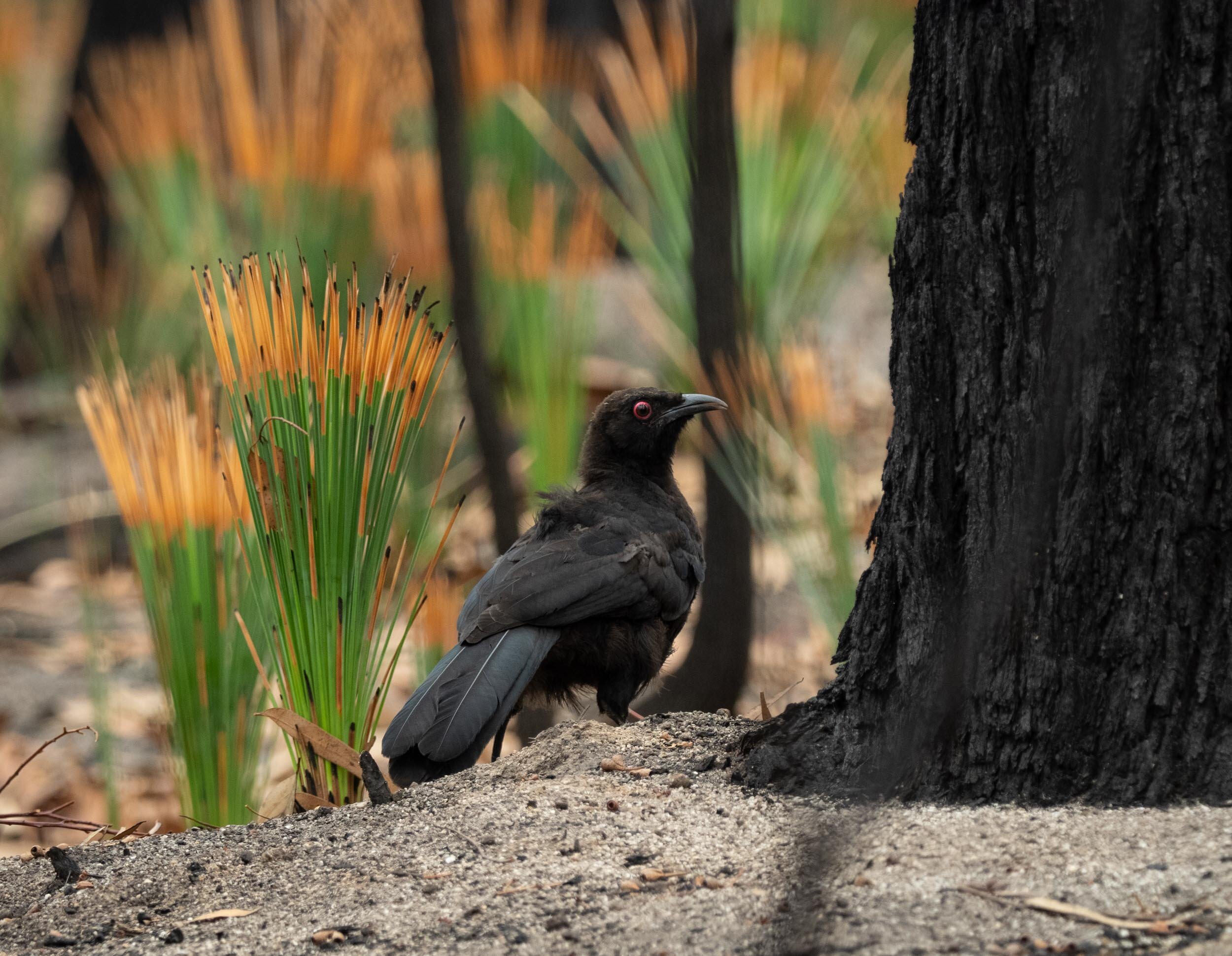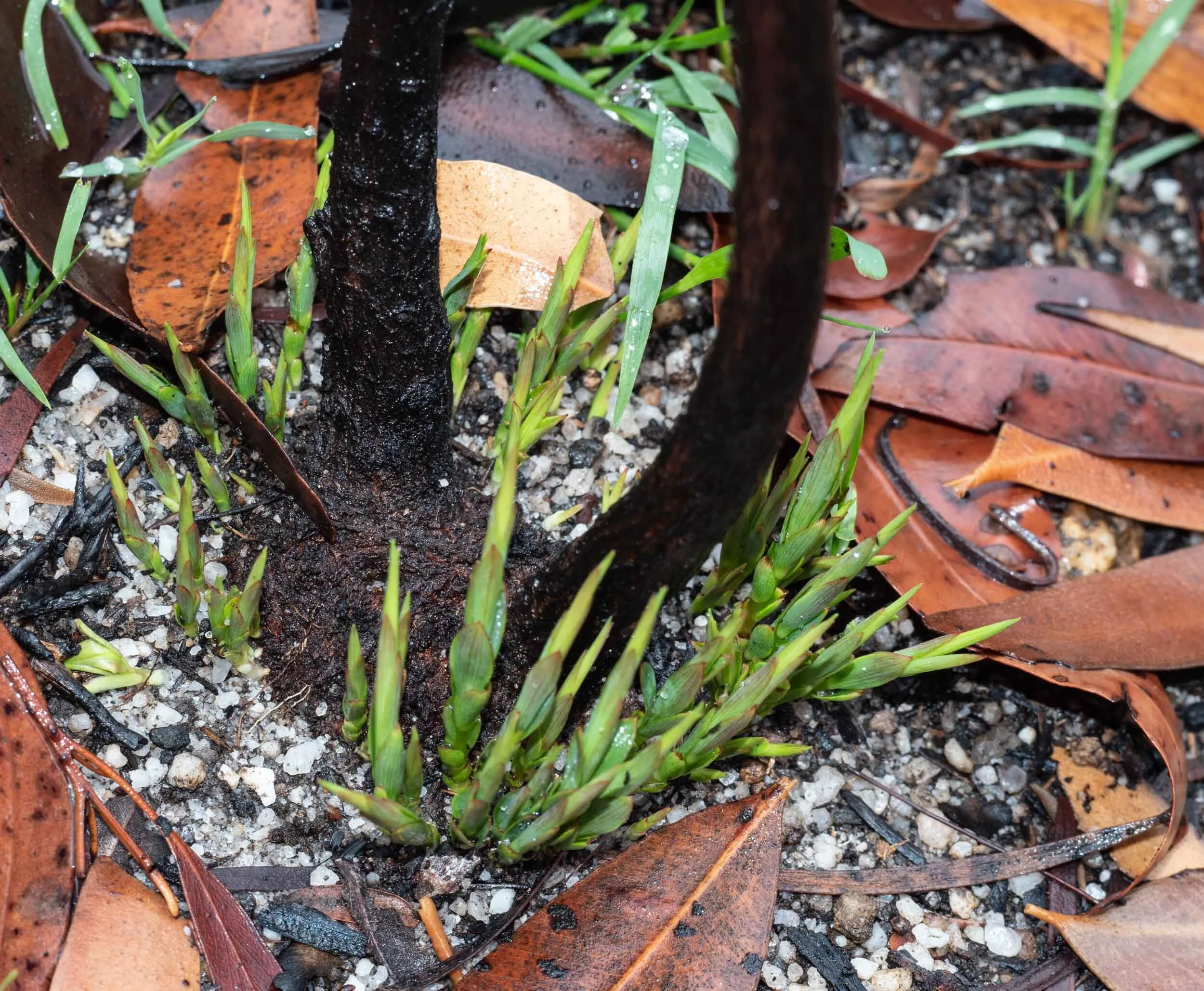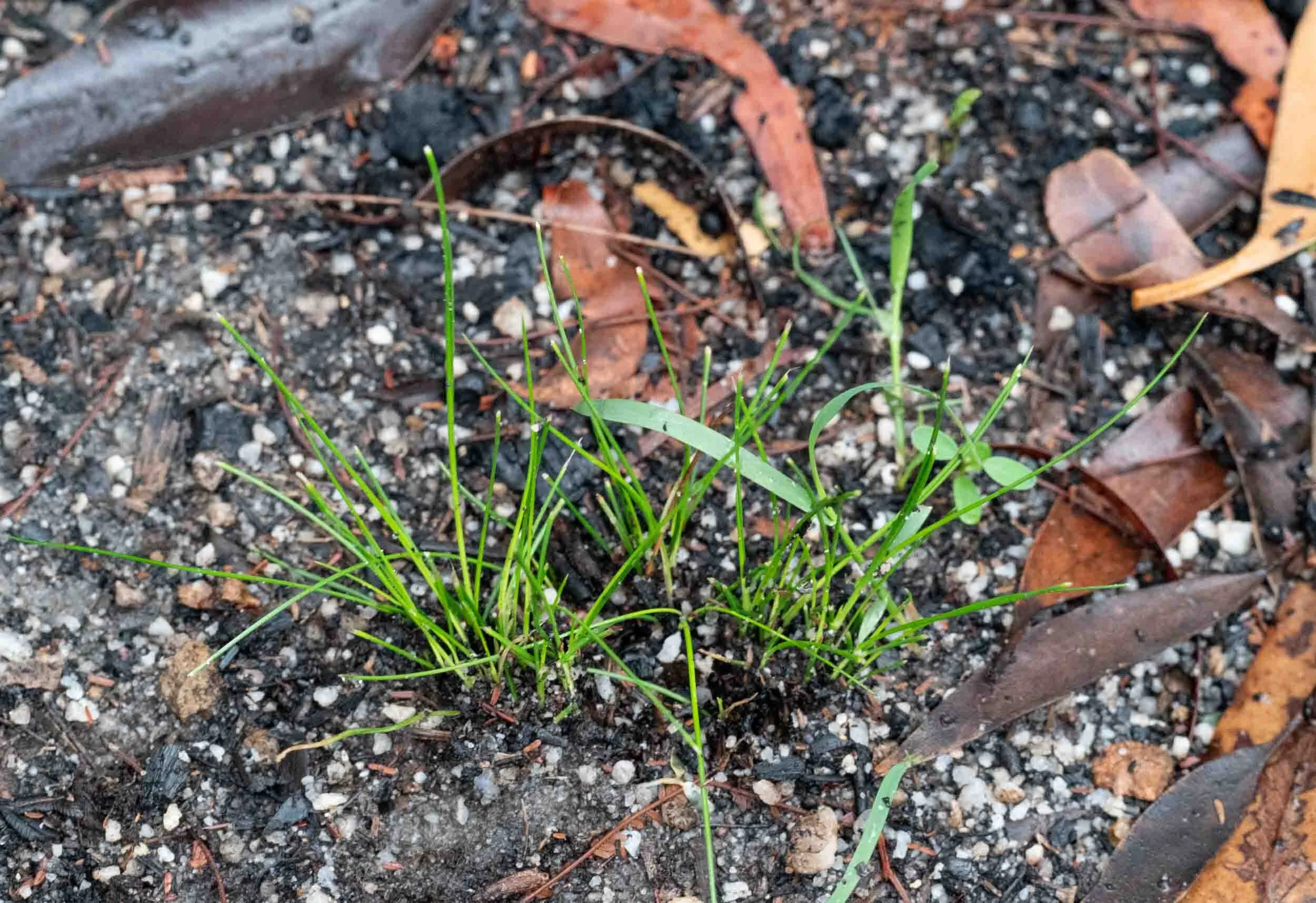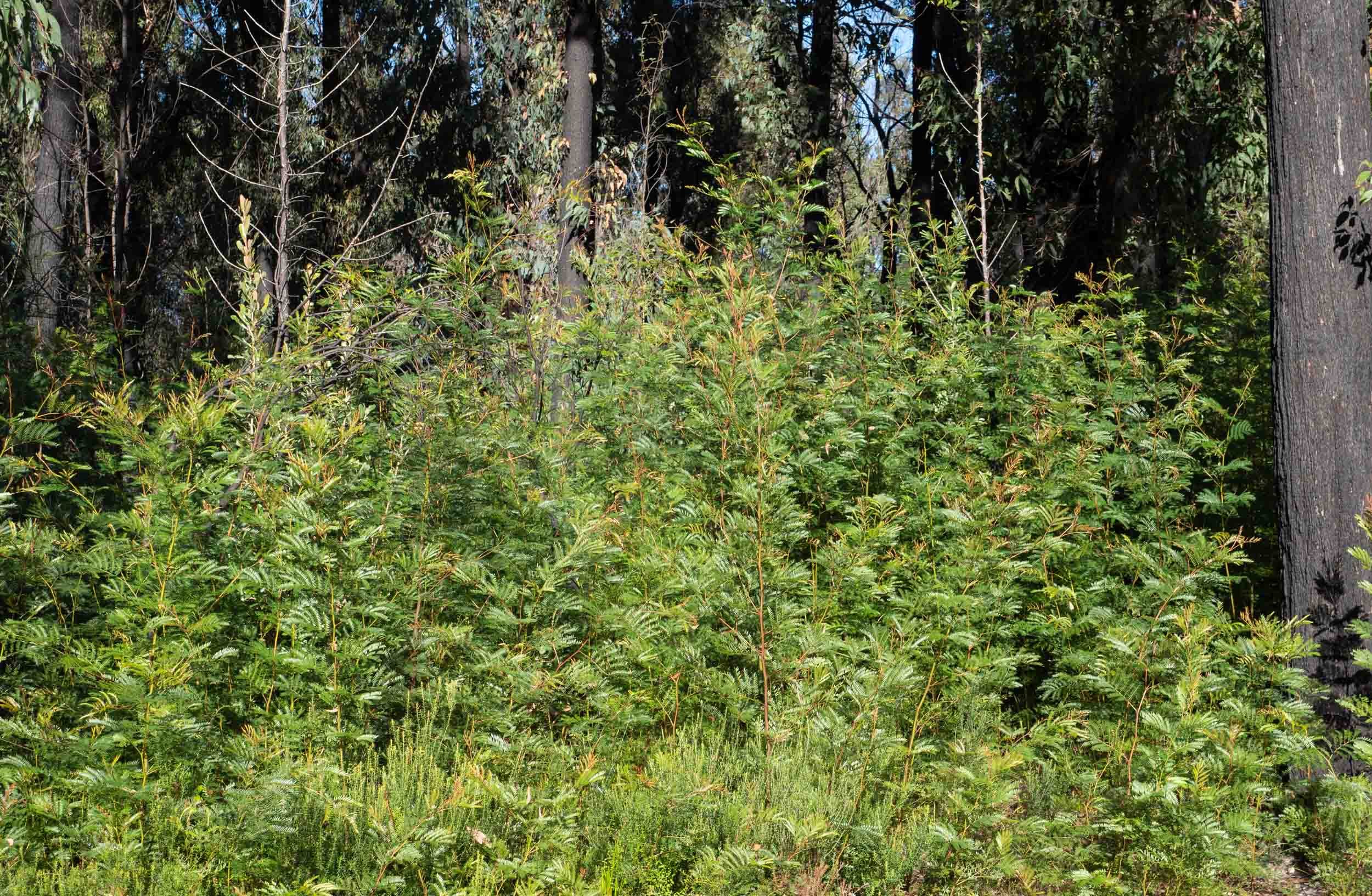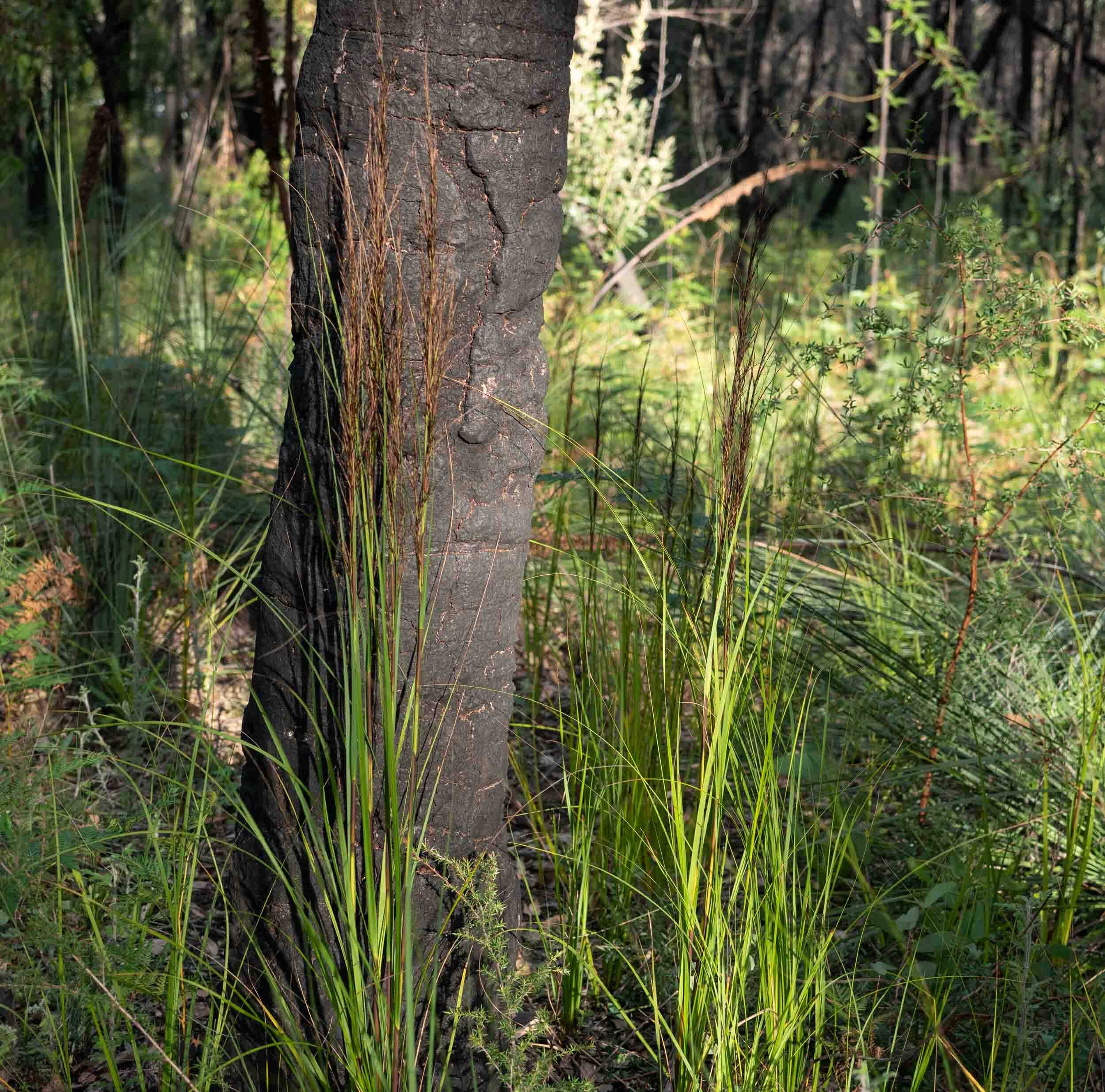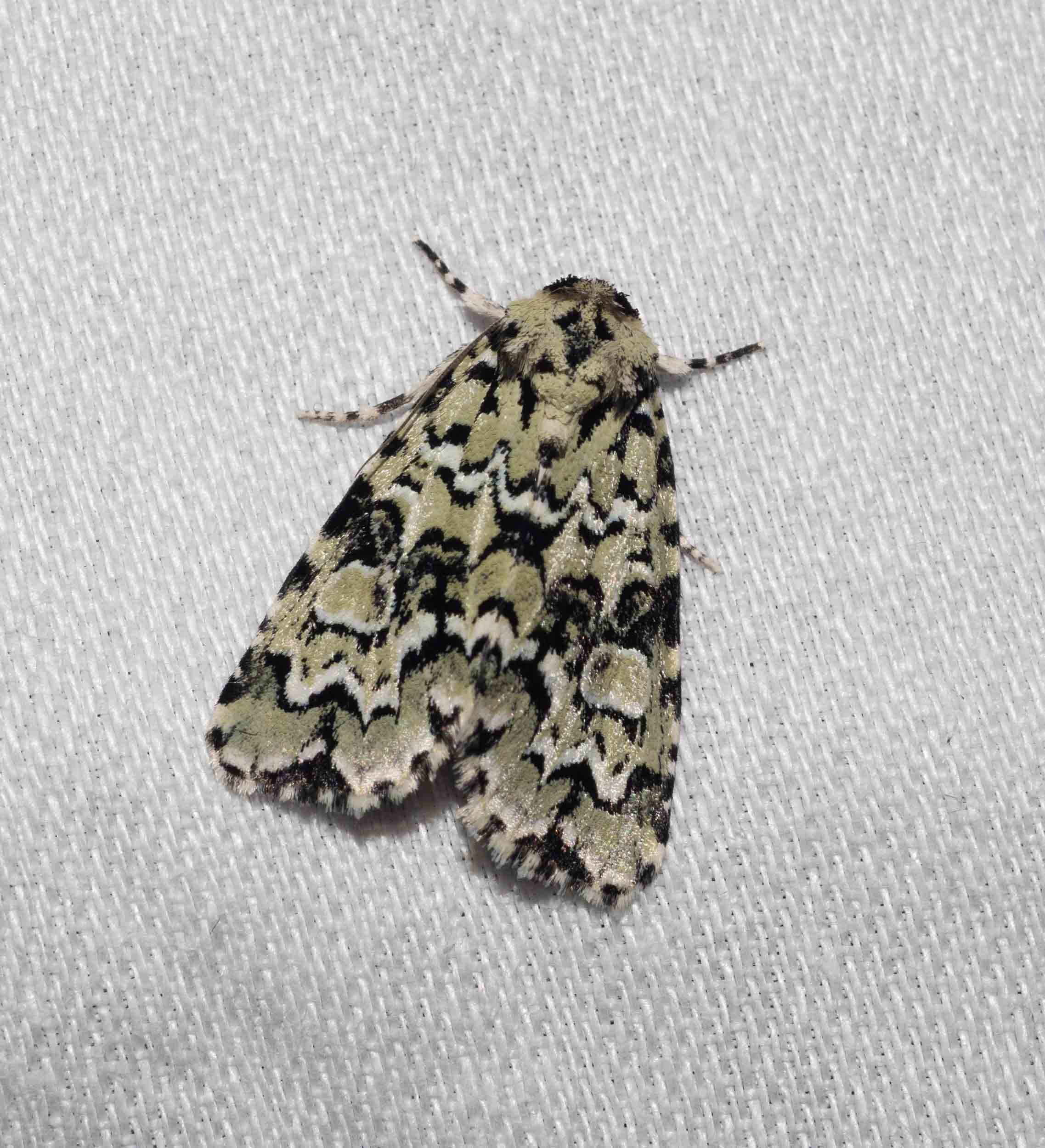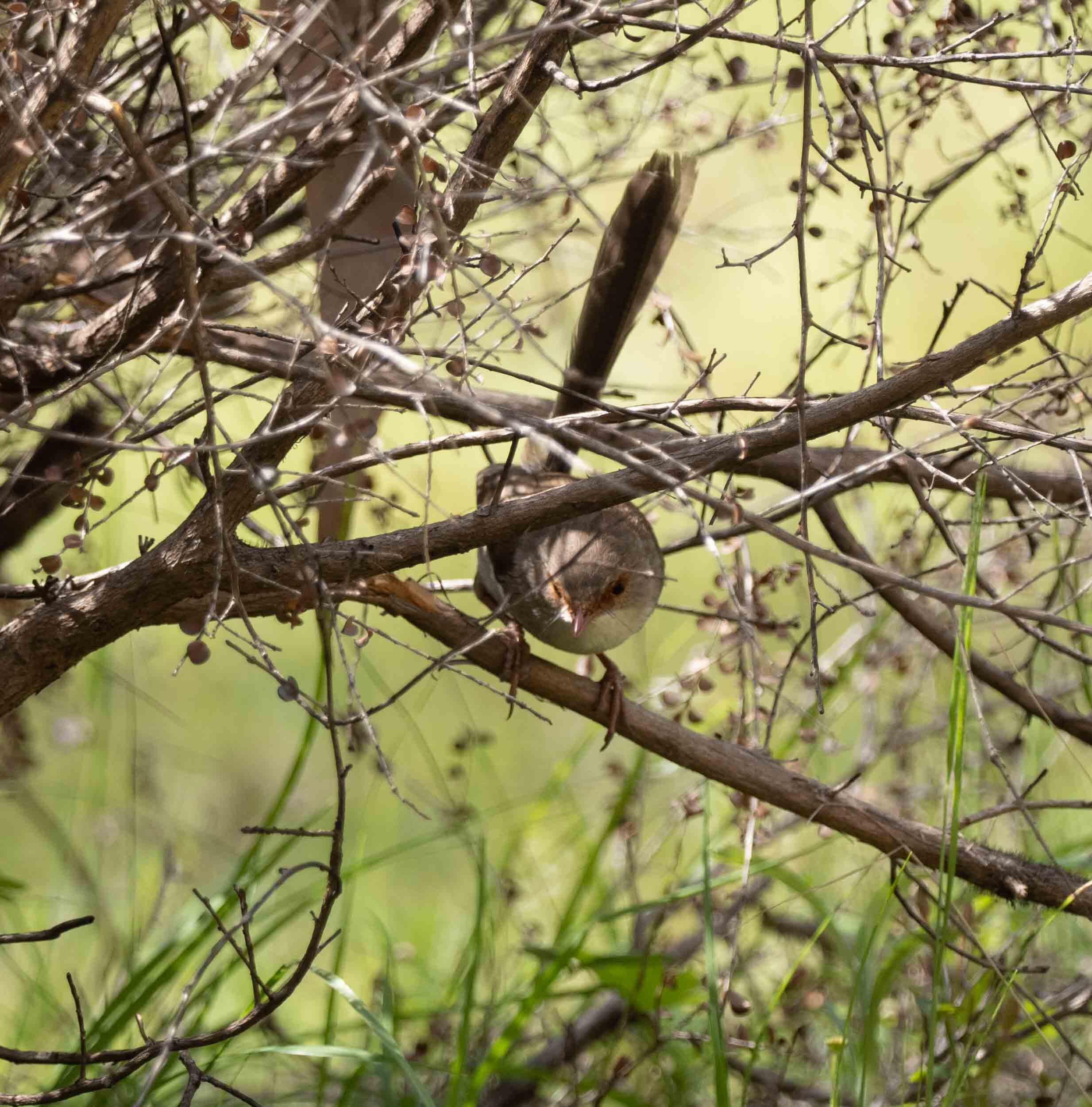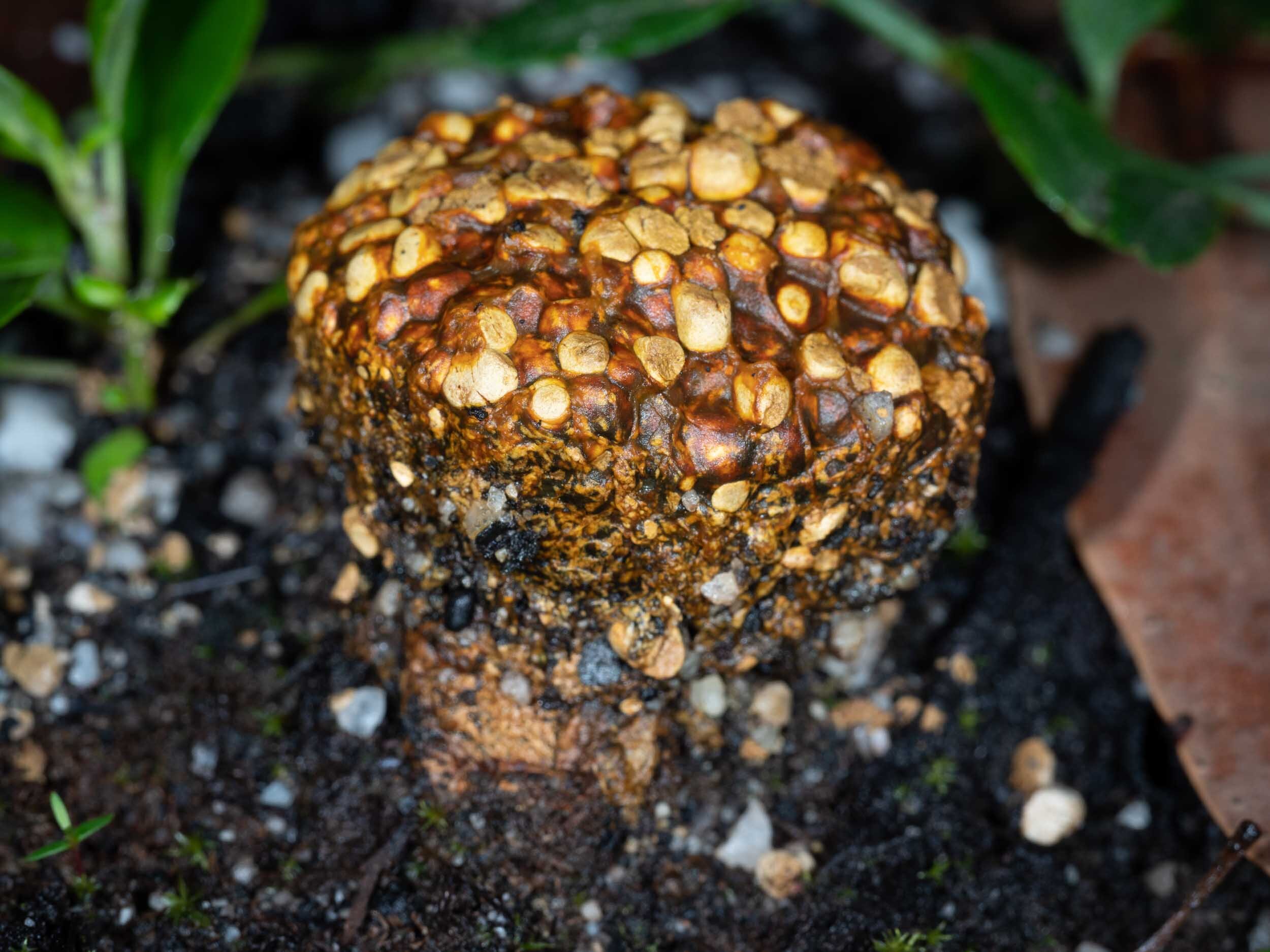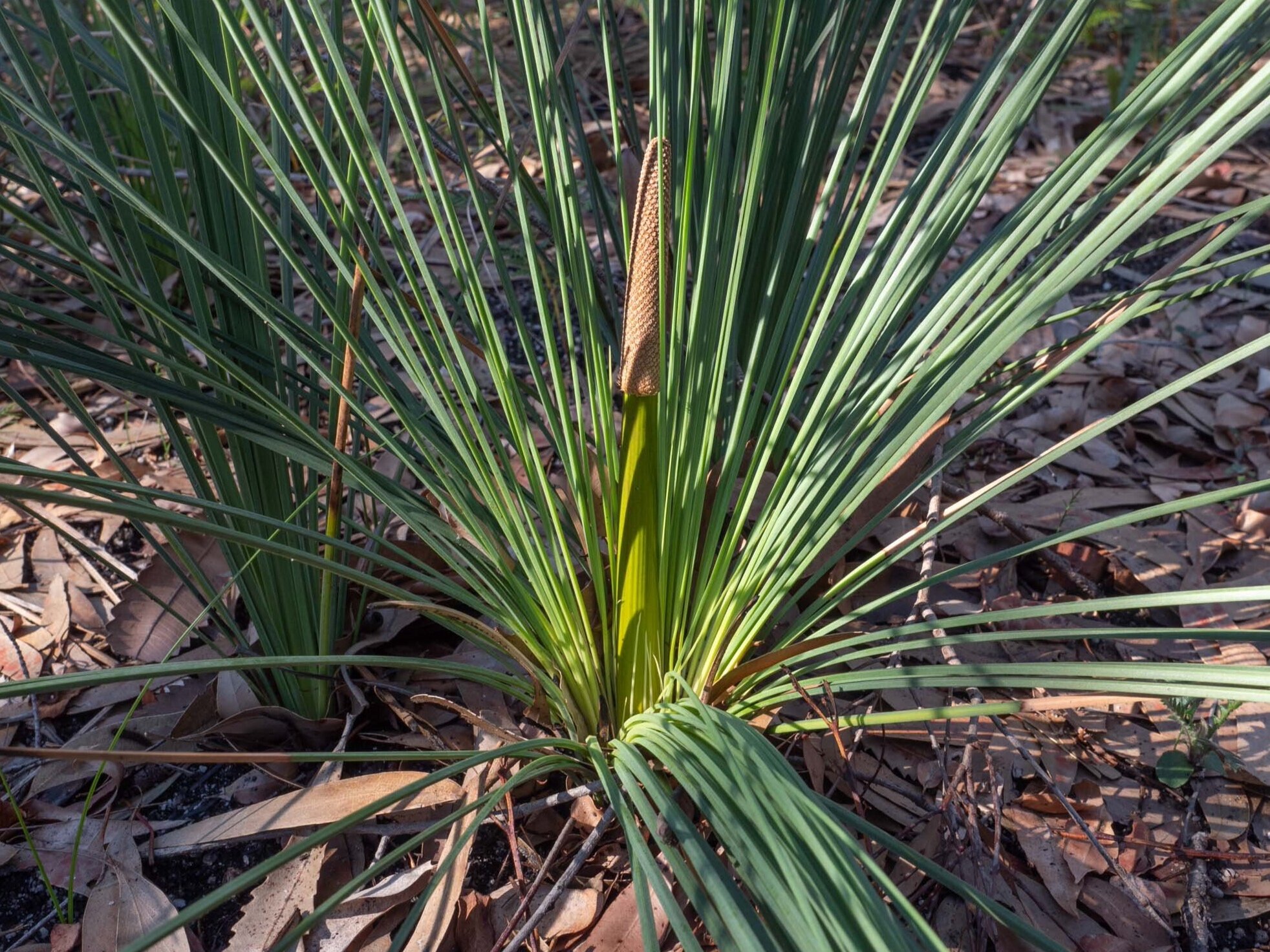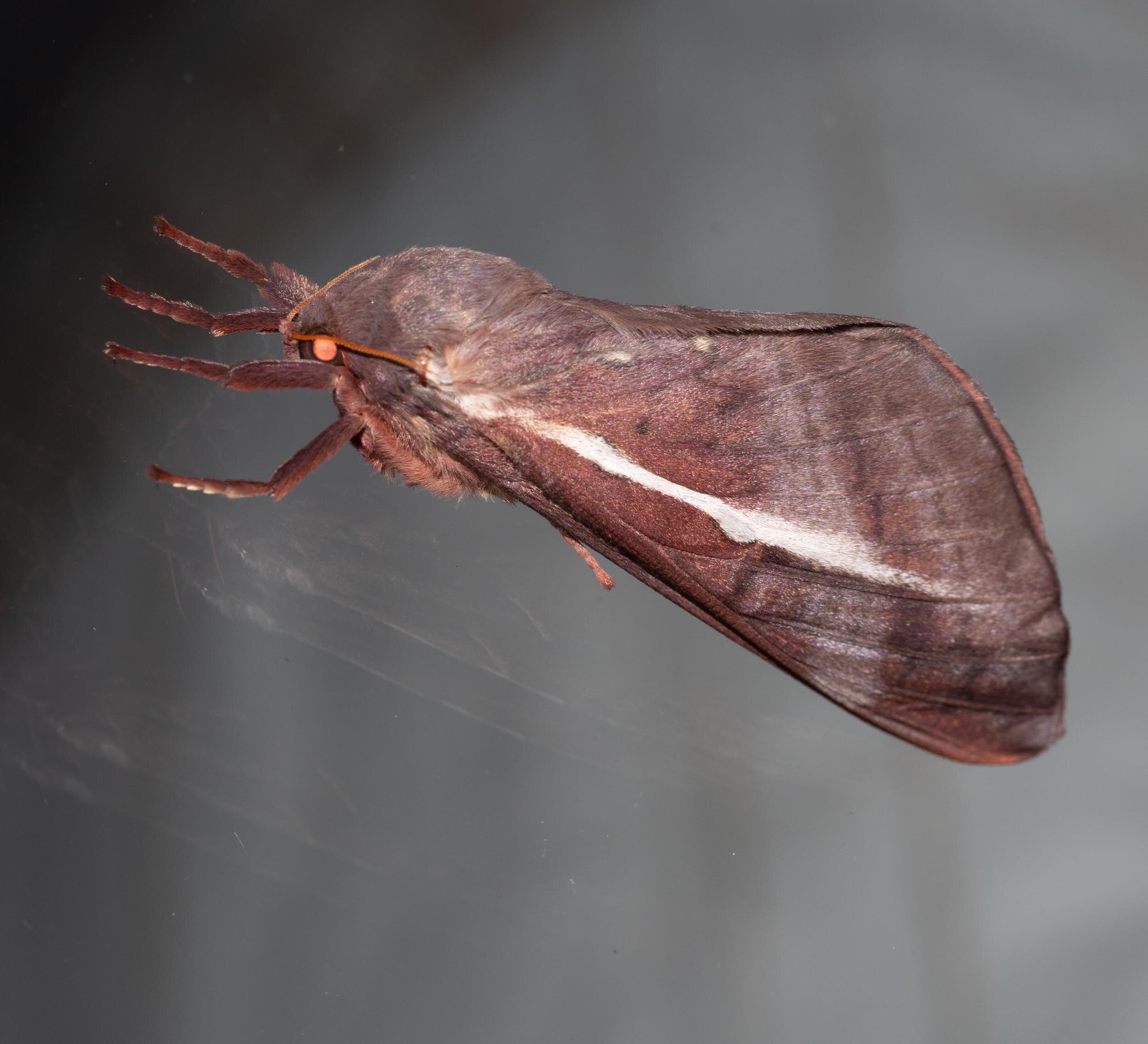Vegetation returns - above and below

The energy that powers ecosystems comes from plants. So the regeneration of our forest after The Fire has to start with regrowth of vegetation. How is this going a month on?
It’s happening. Faster in many respects than we expected. But not uniformly. Some plants have made a flying start. Others are just getting underway. And others as yet show no signs of regrowth.
Here are some snapshots of the recovery process to date.
The hazards of identifying regenerating plants
Sometimes I can identify a regenerating species because I knew that plant before it was burnt. But I am much less certain when only a trace of the original plant remains or when the regrowing plant in question is only a seedling.
In those cases, I am presented with two problems. The foliage of juvenile or regrowing plants often differs substantially from mature ones. Secondly, you usually need a flower to identify a plant to species level with confidence. Few of the plants regrowing after the fire are flowering.
So treat the following plant IDs with caution.
First out of the blocks - Grasses
When we returned home 4 days after the fire, the only signs of green in the ash covered landscape were the shoots of a grass - Imperata cylindrica, Blady Grass - regrowing from existing burnt plants. The tips of the leaves - which were presumably just beneath the surface when the fire impacted - were brown, while the new growth was green.
These shoots were found on the northern side of the house - probably protected by the building as the fire moved in a northerly direction across the block.
A hungry Red-necked Wallaby was grazing on the shoots, oblivious to our presence.
This grass was quickly followed by another Microlaena stipoides, Weeping Grass.
Shoots of Weeping Grass began to appear soon after the Blady Grass and it now dominates the immediate area around the house. Microlaena stipoides is known to respond strongly to fire, regrowing from rootstocks and lateral roots. Kangaroos love it, so we needn’t worry about it taking over.
Grass Trees - another early responder
The fire was most intense on the southern side of the block. Even today, over a month after the fire, there is little growing at ground level here. The one exception, and it’s a major one, are the Grass Trees, Xanthorrhoea concava.
There are hundreds of these plants in that section of the forest. A week after the fire, these were blackened stumps protruding from the grey, ash-covered soil with their tufts of apparently dead leaves.
But less than a week later, life in those leaves was reactivated. They grew rapidly upwards bearing their scorched, brown tips above the new, green section.
We’re anticipating a spectacular show next Spring as fire stimulates flowering of grass trees.
A burst of activity at three weeks
A new wave of regeneration of our native vegetation seemed to occur at around three weeks after the fire. This really lifted our spirits at a time when we were wondering whether we would ever see the return of our ecosystem.
Seedlings
Quite suddenly, a host of seedlings popped up, mainly in the area around the house - presumably from the rich seedbank in the soil. This panel shows a sample of these. See my earlier caveat about identification! Update - I’ve recently revisited some of the IDs after a recent visit from Jackie Miles.
Rebirth by sprouting
The three week time point also signalled the regeneration of a range of plants from apparently dead, blackened stems or associated rootstocks. Here are some examples.
Rainbow Fern and Bracken
Large areas of the block are, or rather were, covered in thickets of Rainbow Fern, Calochlaena dubia. This fern looks superficially similar to Bracken, Pteridium esculentum but its foliage is softer. Unlike Bracken it grows in clumps and spreads only slowly.
Those Rainbow Fern areas are important habitat for a range of small birds, including Superb Fairy Wrens, White-browed Scrubwrens, Eastern Whipbirds and Brown Thornbills. They were completely destroyed by the fire. We were fearful that they might not regrow but our fears were certainly unfounded!
Every day we’re seeing new shoots appearing in those areas where we had a thick cover of Rainbow Fern. Regrowth occurs from the thick rhizome just beneath the soil surface.
Bracken is regrowing in the same areas and started to do so well before the Rainbow Fern. It will be interesting to see who wins the battle for dominance here. We’re barracking for the Rainbow Fern!
Eucalypts respond!
Tall eucalypt trees define our forest. We lost several of them during the fire. But we hoped desperately that most of the trees left standing would survive.
We knew that one key survival response of eucalypt trees after fire is epicormic budding. Following damage to the tree’s crown in a bushfire, these buds, located in the sapwood of the trunk and branches, are activated. They sprout, producing new leaves to enable the tree to continue photosynthesis.
We waited nervously for signs of epicormic budding. The first tree to respond, on day 23, was perhaps the most unlikely candidate. It was an old Angophora floribunda tree that had regenerated its crown after losing the top half of the trunk many years ago. The fire of Jan 5, 2020 burnt through the base of the regenerated crown and it toppled to the ground.
When we arrived home the trunk was still smoking. It seemed miraculous that this tree would survive, let alone be the first to sprout. Yet here it was. On day 23 after the fire, the thick bark was punctured by insistent epicormic buds, which expanded rapidly once in the open air.
By day 37, the trunk showed a profuse growth of green leaves, actively supplying the nutrients needed for the tree’s continued growth. It’s difficult to see what the future holds for this individual, but it’s fighting on!
Epicormic growth has followed swiftly in many other eucalypts. We’ve now seen it in six species - Eucalyptus globoidea (White Stringybark), Eucalyptus cypellocarpa (Mountain Grey Gum), Eucalyptus sieberi (Silvertop Ash), Eucalyptus consideniana (Yertchuk), Eucalyptus obliqua (Messmate) and of course, Angophora floribunda (Rough-barked Apple). These include both rough-barked and smooth-barked eucalypts.
Many of these trees are showing epicormic budding on branches instead of or in addition to the trunk. It looks a bit bizarre, but it’s doing a very important job.
A grab bag of regenerating plants
Over a month after the fire, we continue to find new plants regenerating. Here is a selection of both early and later responders, all photographed on day 36.
A key survivor - hopefully!
A shallow gully on the eastern side of the block is a stand of tall, apparently old Saw Banksia, Banksia serrata trees. This is one of my favourite parts of the block. The fire through there was intense and we feared for the survival of those trees.
But there is cause for optimism. Just a few days ago, 34 days after the fire, we discovered epicormic buds on the trunk of one Banksia serrata tree.
It’s also possible that seeds dropped by the Banksia cones will have survived the fire. So young trees might soon grow alongside the old ones.
One of a kind
We have one plant on the block - and I mean one individual plant - which by rights we shouldn’t have. Tree ferns are usually confined to moist, sheltered rainforest gullies.
There is a single Rough Tree Fern, Cyathea australis growing in a clearing in a dry, flat area of the block. It was doing quite well before the fire, but didn’t look too good thereafter. I thought that it had seen the end of its days.
Then lo and behold, I discovered just a couple of days ago that it had regrown two fronds! It may continue to be the unlikely survivor.
How far is there to go?
The list of plants that have shown signs of regeneration is quite long. One might be excused for thinking that the forest ecosystem is well on the way to restoring itself.
But this is not so. We see few insects and other arthropods around the place. We make occasional sightings but nothing like the numbers or diversity we were seeing before the fire. There simply isn’t enough habitat to support these creatures, which I’ve recently seen called the “rivets” of an ecosystem.
We’ll have to wait until all of the seedlings and shoots that have appeared since the fire grow to fill in the largely vacant undergrowth and middle storeys. Many of these forbs, shrubs and small trees will take a couple of years before they flower and bear fruit. And it will be a while before the large eucalypt trees have regained their foliage with attendant communities of insects.
But we’re patient and looking forward to following the rebuilding process!


















